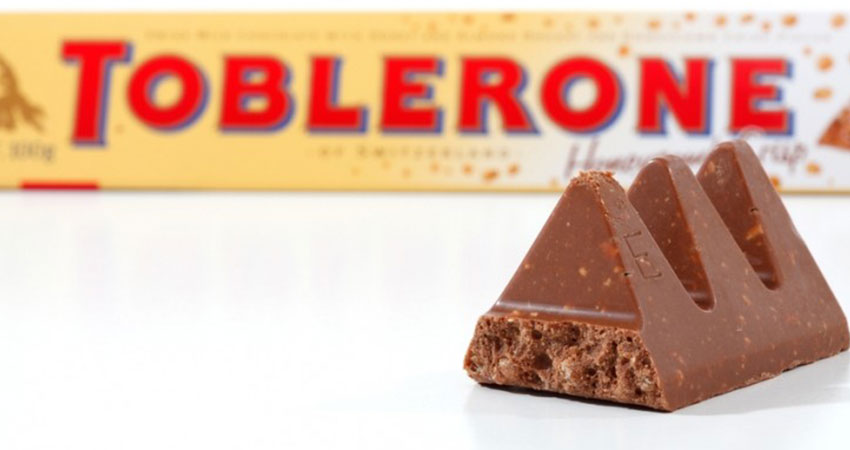The latest U.S. inflation figures show prices have increased by 7.9% in the past year. Companies are under pressure, facing higher prices for their supplies and some are trying to pass that onto consumers in a phenomenon called shrinkflation. This is the practice of decreasing the quantity or size of an item, while its price stays the same.
A study analyzed data from the market to reveal buyers are more sensitive to changes in price than to changes in quantity. Because of this, some companies don’t seem to publicly announce changes in product sizes, perhaps because they may not be as noticeable to the buyer.
Shrinkflation in consumer packaged goods was happening pre-pandemic but is set to get worse due to heightened demand, high ingredients prices plus labor costs, combined with a supply chain and shipping crisis, at ports and elsewhere.
Shrinking product sizes to boost profits is nothing new, but it does increase during periods of shortages and inflation. Despite the approach being legal, it has resulted in complaints and even lawsuits.
Toblerone: The Poster Boy for Shrinkflation
Mondelez, which owns Swiss chocolate company Toblerone, famously reduced the weight of its bars by 25% by adding more space between each piece. However, it overturned the decision two years later after public backlash.
Shrinkflation is also rife across B2B trading as suppliers look to recoup more contributions from each unit sold. Wholesale price surges are being driven by severe increases in the price of raw materials.
For example, steel prices have currently topped $600 per ton with forecasts suggesting the price is continuing to increase towards a suspected $750 per ton. Freight surcharges of 10%-18% are another example, impacting trucking transportation, which in turn is driven by skyrocketing fuel prices and driver scarcity.
Some say shrinkflation is a sneaky strategy because CPG manufacturers use the same packaging but give customers less, arguing it’s an attempt to deceive them. But many are making sure changes are available for consumers to see in some format, for example by placing announcements on company websites.
But how likely is a consumer to visit a website? That’s why the notice is placed there, as opposed to a public announcement on traditional or social media.
It’s worth noting that product weight fluctuations happen most of the time as brands carry out consumer research and modify product lines to increase sales and profitability. Many brands aren’t deliberately being sneaky just because their product downsizing is now tied to inflation; it’s something most do all the time.
To Notify, Or Not to Notify – That is the Question
There is also no obligation for companies to keep their products the same size or quantity, just as there is no obligation for shoppers to buy them. The question is, should manufacturers be more transparent with consumers when product size shrinks?
It’s part brand image, part moral issue, with companies having to decide how obvious they want to make the changes when they’re not obliged to advertise them.
Some brands argue that as prices and sizes of items are clearly labelled, buyers are making informed purchase decisions. But with today’s fast-paced lifestyles, how many consumers really have the time to check the weight in grams of each item they buy?
It’s the consumer’s responsibility to check the pack, but communication with buyers is key. It’s essential that if you’ve made changes to a product, tell them you’ve done it. If you’re not defining an item fairly or accurately for what it is today, then that’s misleading.
Nuanced Messaging
I also think if more companies were openly apologetic from the start, consumers would be more understanding. For example, saying something like, “‘We’re sorry but we have no choice but to do this because our ingredients are now in short supply.”
Shrinkflation is a precarious choice and if you’re trying to persuade consumers to pay the same for less, they may decide to reject your brand for an alternative. Despite buyers often having a preference for a particular brand or product, shrinkflation may push them toward other options or a white-label version. This is especially true as data shows consumers can save anywhere from 15% to 30% by buying a store brand.
Some consumers are also trying to sidestep shrinkflation by buying whole foods rather than pre-packaged items, which can be less vulnerable to shrinkage.
To ensure brand loyalty, brands should take a more strategic look at the product’s overall cost and prioritize lowering it and enhancing efficiency without impacting value or quality.
A lot can be gained through innovation, too. Offering a better-quality product might make consumers more willing to pay more for less of it. Alternatively, the use of lighter or more condensed packaging could lessen distribution costs.
Charles Haverfield is a Packaging Executive with US Packaging and Wrapping

